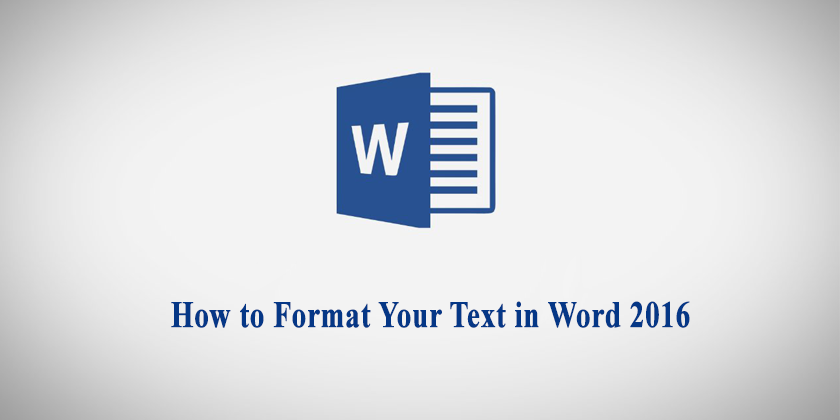The Art and Science of Formatting Text in Microsoft Word 2016: A Comprehensive Guide

Introduction:
Microsoft Word 2016 stands as a powerful ally in the realm of word processing, providing users with a rich array of formatting options to transform plain text into visually compelling and well-structured documents. In this extensive guide, we will embark on a journey through the intricacies of formatting text in Word 2016, exploring the myriad features and techniques that elevate document aesthetics and readability.
Section 1: Basic Text Formatting
1.1 Font Styles and Sizes:
At the heart of text formatting lies the selection of appropriate font styles and sizes. Word 2016 boasts a diverse collection of fonts, enabling users to convey the desired tone in their documents. Understanding how to manipulate font sizes ensures that text is not only visually appealing but also optimized for readability.
1.2 Bold, Italics, and Underline:
The trifecta of bold, italics, and underline serves as the cornerstone for emphasizing and stylizing text in Word 2016. Mastery of these basic formatting tools allows users to highlight key points, titles, or sections within their documents, enhancing overall clarity.
Section 2: Advanced Formatting Techniques
2.1 Styles and Formatting:
Word 2016 introduces Styles as a powerful feature for consistent and efficient formatting. Users can create, modify, and apply styles to text, ensuring uniformity throughout the document. Understanding the nuances of styles streamlines the formatting process, especially in longer and more complex documents.
2.2 Text Boxes and WordArt:
For a touch of creativity, Word 2016 provides the option to incorporate text boxes and WordArt. Text boxes allow users to position text anywhere on the page, while WordArt provides a myriad of stylized options for creating visually striking headings and titles.
Section 3: Paragraph Formatting
3.1 Alignment and Indentation:
The aesthetics of a document extend beyond individual words to encompass the entire paragraph. Word 2016 offers options for left, right, center, and justified alignment, allowing users to tailor the layout to their preferences. Indentation options further contribute to a polished and structured appearance.
3.2 Line Spacing and Paragraph Spacing:
Achieving optimal readability involves mastering line spacing and paragraph spacing. Word 2016 provides users with the flexibility to adjust spacing settings, ensuring that text is presented in a clear and organized manner. Fine-tuning these settings enhances document aesthetics and professionalism.
Section 4: Lists and Bullets
4.1 Bullets and Numbering:
Structured lists are integral to conveying information clearly. Word 2016 offers robust options for creating bulleted and numbered lists, providing users with the tools to organize and present content in a visually appealing format. Customization options add a layer of flexibility to list formatting.
4.2 Multilevel Lists:
For documents with complex structures, multilevel lists in Word 2016 come to the forefront. Users can create hierarchical lists with varying levels of indentation and numbering, facilitating the presentation of information in a tiered fashion.
Section 5: Specialized Formatting Features
5.1 Hyperlinks and Bookmarks:
In the digital age, the inclusion of hyperlinks is crucial for connecting documents and providing additional resources. Word 2016 allows users to insert hyperlinks seamlessly, enhancing the interactivity and usefulness of the document. Bookmarks further aid in navigating lengthy documents.
5.2 Symbols and Special Characters:
For documents requiring special characters or symbols, Word 2016 offers an extensive library to choose from. Users can effortlessly insert symbols, mathematical notations, or other characters to enhance the depth and specificity of their content.
Section 6: Proofing and Reviewing Tools
6.1 Spell Check and Grammar:
Word 2016’s robust proofing tools ensure the integrity of the text. The spell check and grammar features identify and correct errors, contributing to the professionalism of the document. Customizable proofing options cater to individual writing styles and preferences.
6.2 Track Changes and Comments:
Collaborative editing is streamlined through Word 2016’s ‘Track Changes’ and ‘Comments’ features. These tools allow multiple users to contribute to a document while providing a clear record of edits and suggestions. Efficient use of these features enhances collaboration and document refinement.
Conclusion:
Mastering the art and science of formatting text in Microsoft Word 2016 is a journey that transforms ordinary documents into polished and professional works of communication. From basic font manipulation to advanced formatting techniques, Word 2016 offers a comprehensive suite of tools to cater to the diverse needs of users. Embrace the power and versatility of Word 2016’s text formatting features to elevate your document creation and presentation to new heights.




